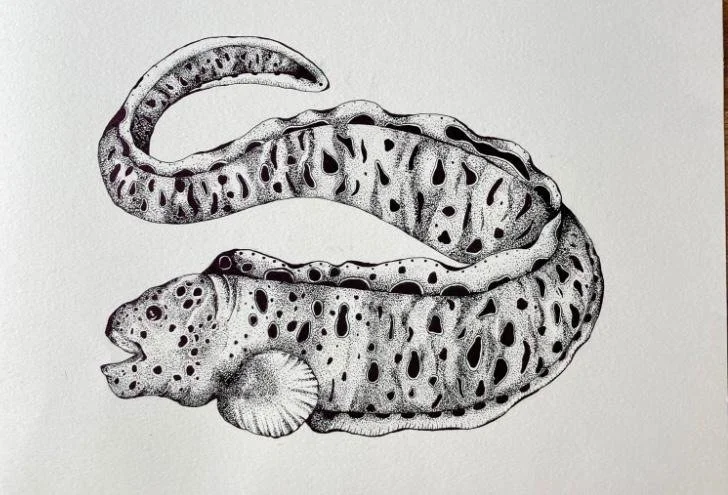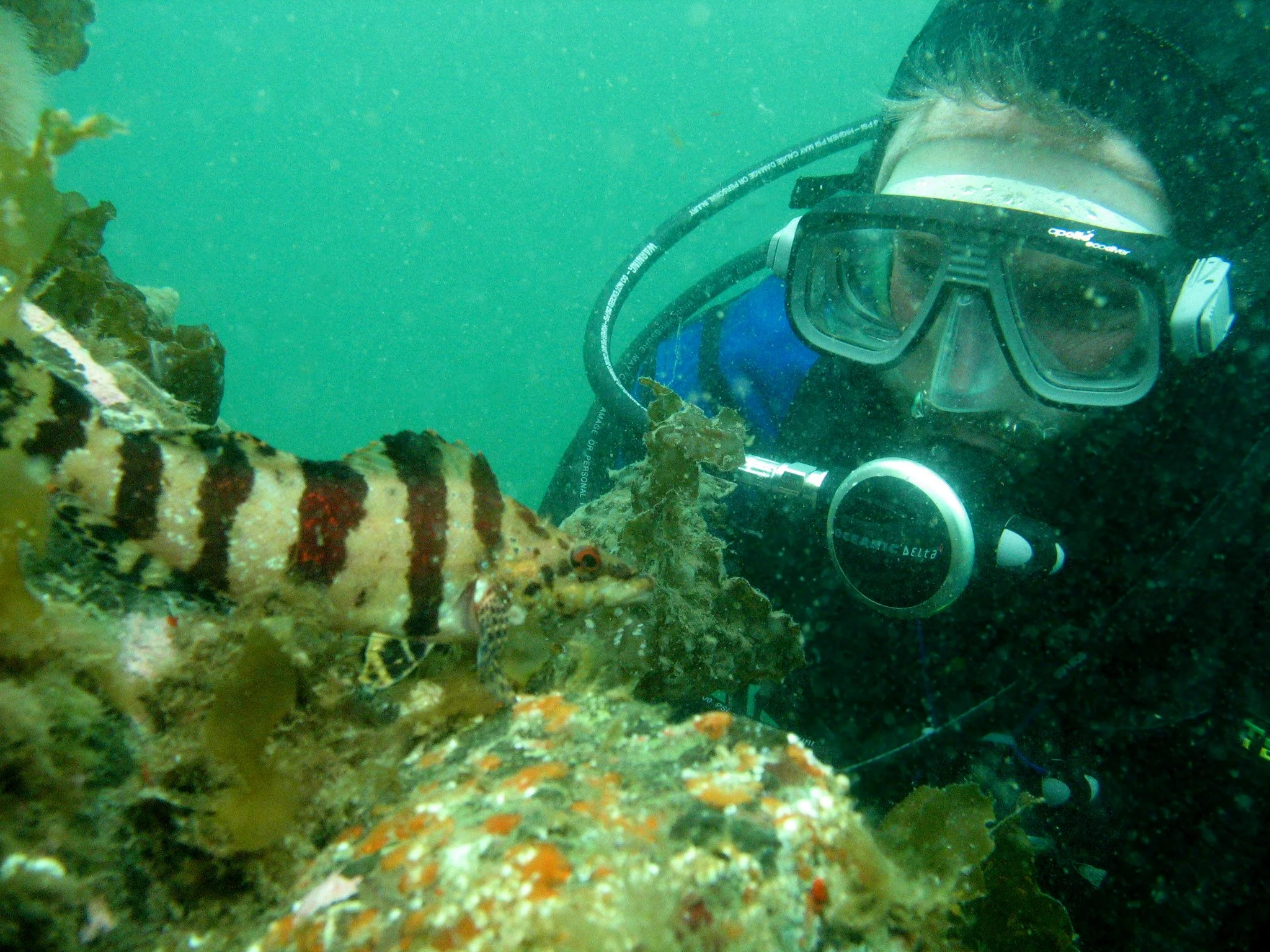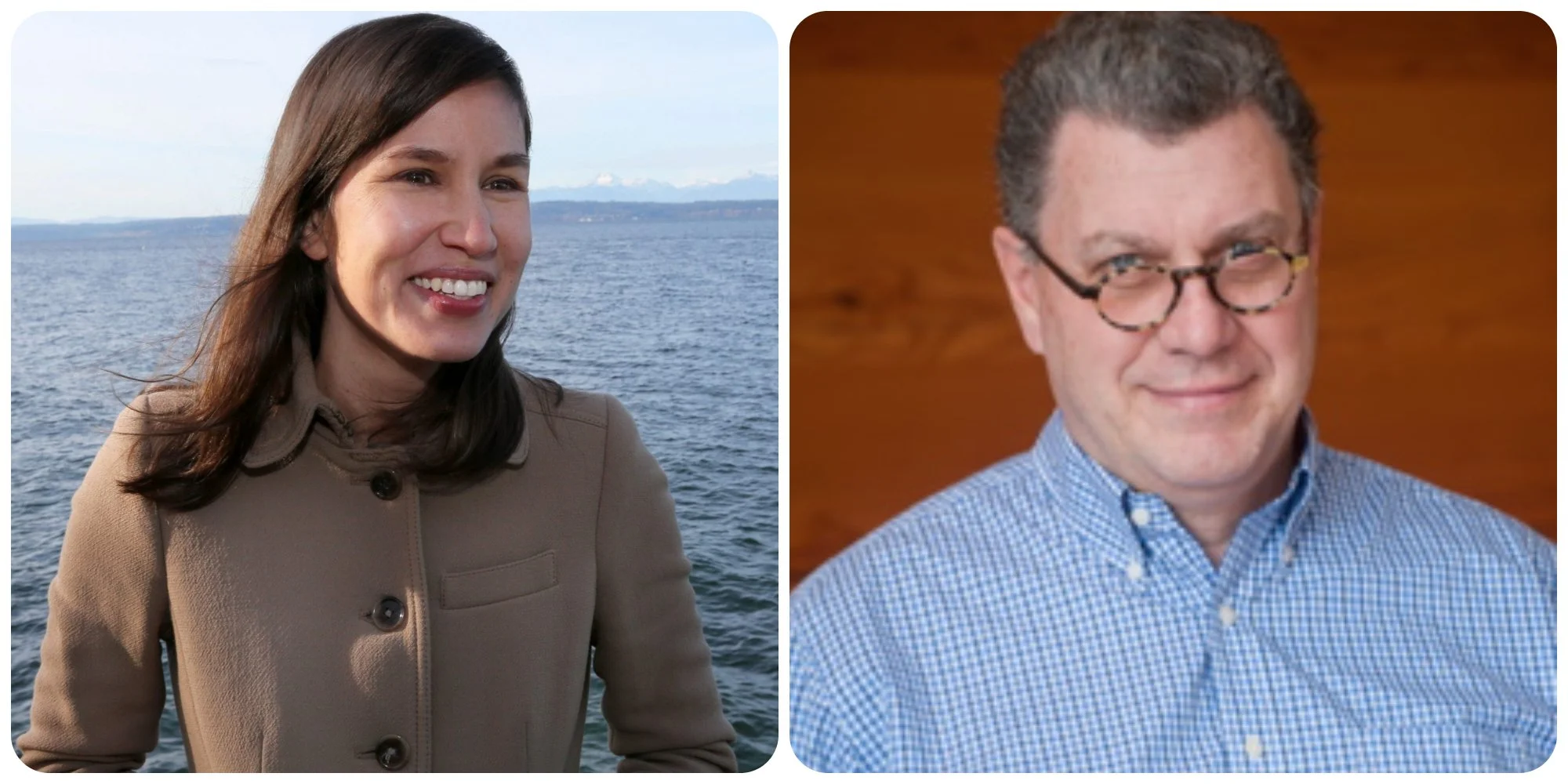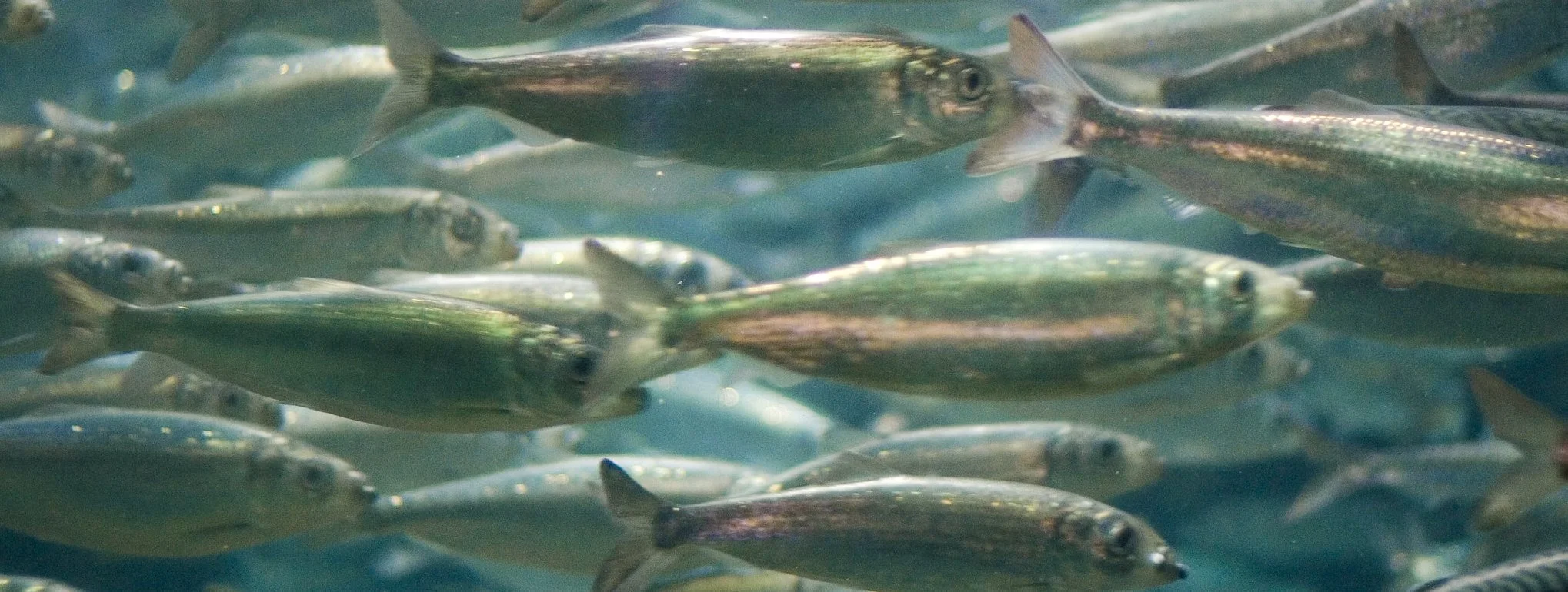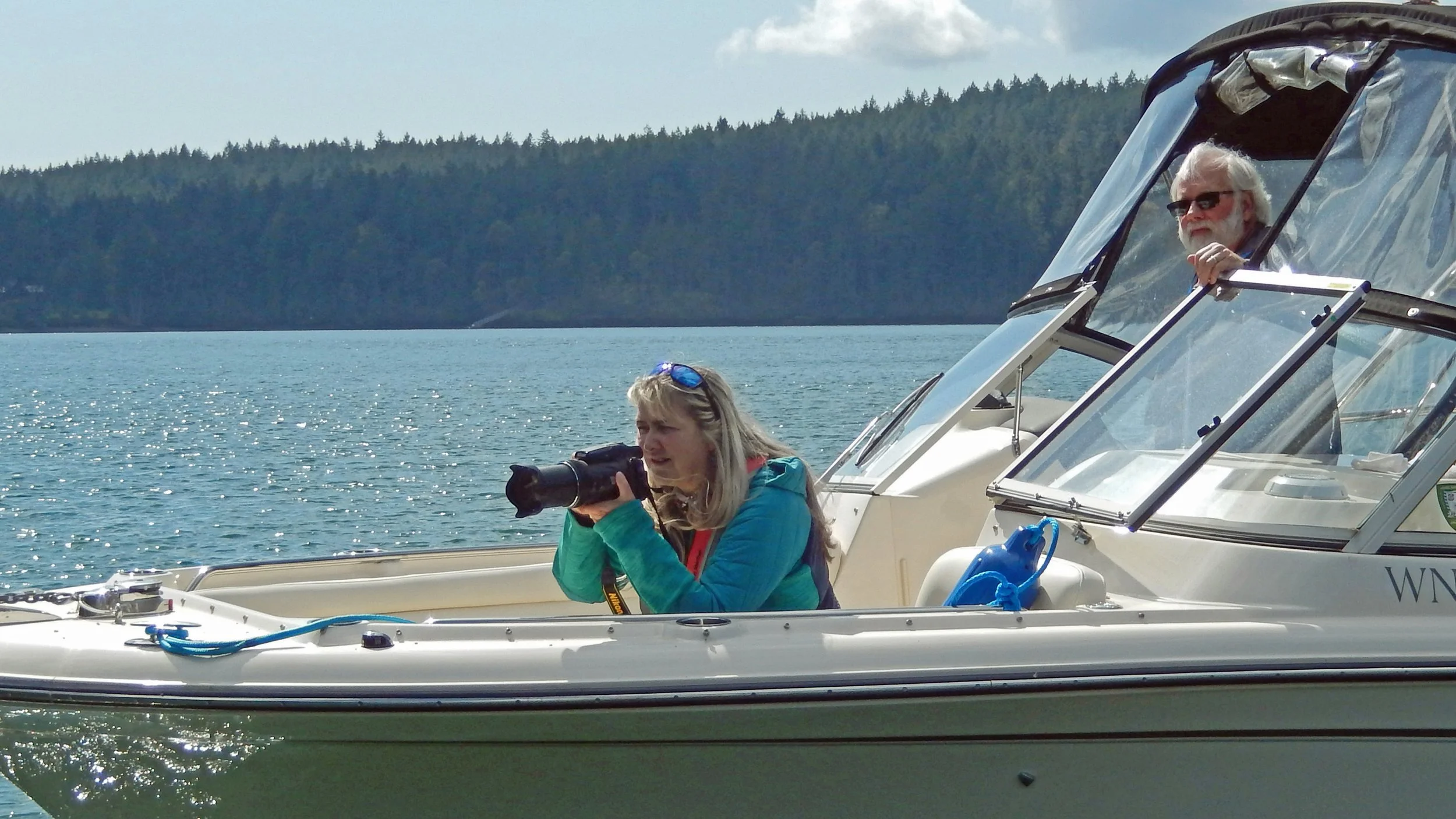We’re so excited to introduce the newest member of our Board of Directors, Laurie St. Aubin! Our Board is vital to our mission here in the Salish Sea, and as you’ll see in our short chat below, Laurie brings a whole lot of talent, experience, and passion to the team.
Necropsy Performed on Dead Minke Whale
A Minke whale that was discovered dead and floating this week most likely died from being struck by a ship, according to researchers. The floating whale, first reported to the The Whale Museum stranding hotline by a commercial vessel, was located by Stranding Coordinator Jessica Farrer and later towed to a private beach on a nearby island by the US Coast Guard.
Under authorization of NOAA Fisheries, scientists and veterinarians from the Whale Museum’s stranding network, Cascadia Research Collective, World Vets, and the SeaDoc Society performed a complete necropsy.
Is Edible Seaweed in the Salish Sea Safe for Human Consumption? A New SeaDoc-Funded Study Has the Answer.
Seaweeds are consumed by many people living on or near the Salish Sea–from Indigenous peoples revitalizing the ancient foodways of their cultures to those simply seeking a readily available and highly nutritious protein source–but little is known about whether contaminants in the Sea’s waters could create health concerns for the people who eat it.
Donor Spotlight: Richard and Dawn Bangert
This month’s Donor Spotlight features Richard and Dawn Bangert—two big SeaDoc supporters who have been regular guests at our Wine & Sea Auction over the years! The Bangerts also have their gifts matched by their former employer. Get to know Richard and Dawn below and check to see if your employer matches donations here!
Studying Seal Sizes to Benefit Their Survival
Science helps us adapt and improve. For decades, marine mammal stranding response and rehabilitation organizations in the United States have been treating and rehabilitating harbor seal pups, and releasing them back into the wild. It’s critical that during rehabilitation seals gain sufficient blubber and mass so their fat reserves can enable them to survive after they are released. Prior studies have suggested that seals with greater body mass have better odds of survival. Unfortunately, until now, there has been no nationwide assessment of the sizes at which seals are released.
Donor Spotlight: Wally and Josie Barrow
Wally and Josie Barrows’ connection to the Salish Sea runs decades deep. They started off as visitors but in time felt the pull to make a home on Orcas Island. The Barrows have supported SeaDoc Society’s conservation work for years and are regular attendees at our summer Wine & Sea Auction. Our research vessel and marine mammal stranding response boat, the “Nancy Bee” is lovingly named in Wally and Josie’s daughter’s memory.
Meet Madison Churchill, Social Media and Communications Editor
I’ve lived in the Pacific Northwest my entire life—currently residing in Seattle. I’m a local artist specializing in scientific illustration of marine organisms. I’m a divemaster and free-diver, and spend as much time as possible underwater. I love combining my art with my love for the sea, using paint as a tool to celebrate the natural world.
Bald Eagle Bites Dr. Joe Gaydos! (VIDEO)
While conducting research up in British Columbia last month, our Science Director Dr. Joe Gaydos got some quality hang time with a bald eagle. You could call this an animal attack, but we’ll call it a nice little going-away present before the beautiful raptor sails off into the horizon soon after the bite. Subscribe and you’ll be first to watch the full episode, coming soon!
Salish Sea Science Prize Awarded to Tina Whitman For Science Leading to Shoreline Restoration
Shorelines play a vital role in ocean health, but they’re also the areas most susceptible to human disruption. Unnatural structures like sea walls and roads disrupt a beach’s ability to sustain itself, inhibiting and sometimes destroying important plantlife and fish species in the process.
But figuring out which shorelines need to be protected and which need to be restored is not simple. Science is the essential underpinning for identifying critical habitat. The SeaDoc Society is awarding the prestigious 2022 Salish Sea Science Prize to Tina Whitman, Science Director at the Friends of the San Juans for producing science that led to copious beach habitat protection and restoration throughout the San Juan Islands. Whitman will receive the no-strings-attached $2,000 cash prize at the Salish Sea Ecosystem Conference on April 28.
Donor Spotlight: Rick and Cathy Svoboda
Maintaining a balance between economic growth and a sustainable environment is a complex and persistent struggle. SeaDoc supporters Rick and Cathy Svoboda know that maintaining that sensitive balance requires all of us to play our small part. That involves not only education about the damage currently being done and the work to address those issues, but also a general awareness that we are all part of one earth with limited and sensitive resources. We had a chance to ask Rick and Cathy about why they support our mission here in the Salish Sea.
Citizen Divers Aid Understanding of Fish in the Salish Sea
Hundreds of fish species live in the Salish Sea, and many face a number of threats. Monitoring the health of these fish populations is crucial. But with nearly 5,000 miles of coastline and more than 400 islands, it’s no small task.
Historically, monitoring fish populations has included fishery catch data, active trawl surveys, underwater video, satellite imagery, hydroacoustics and more. But citizen scientists are increasingly playing crucial roles, according to a study authored by SeaDoc Society Research Assistant Elizabeth Ashley, who is currently attending veterinary school at UC Davis.
Welcome New Science Advisors & Farewell to Those Who Served!
We’re excited to introduce you to two newest members of the SeaDoc Society’s Scientific Advisory Board—a crucial part of our work here in the Salish Sea. Before we properly introduce Sunny Jardine and Nicholas Georgiadis, let’s say farewell to three outgoing Science Advisors that have lent SeaDoc their expertise for a combined 50 years! Huge thanks from our whole team!
Former SeaDoc Intern Gets a Big Honor
Greg Bishop was a SeaDoc Society summer intern back in 2011, which was somehow more than a decade ago! Like many interns who have passed through SeaDoc Society to monitor the Marine Mammal Stranding Network, Greg has gone on to do great and exciting work. This month, his latest paper received a high honor.
He received the Open Reports Best Paper Award for his paper, Feline parasites and the emergence of feline lungworm in the Portland metropolitan area, Oregon, USA 2016–2017. As he shares in our short interview below, this is a study of domestic animals that also teaches us about wild species and the interconnectedness of the ecosystem, from people and pets to wildlife and microscopic organisms.
Recovering Herring Stocks Through Indigenous Practices
Herring are a small species of fish, but they play an outsized role in the food web, culture, and the economy here in the Salish Sea and beyond. These small forage fish provide food for larger fish, birds and marine mammals all throughout the sea. If herring stocks suffer, as many of them currently do, the ecosystem-wide ripple effect is large.
A new SeaDoc-funded study will test herring recovery tools adapted from Indigenous practices to support or improve spawning and reproduction. The collaborative work will be led by Long Live the Kings, the Nisqually Indian Tribe, Port Gamble S’Klallam Tribe, Washington Department of Fish and Wildlife, and the University of Washington.
Donor Spotlight: Kelly and Janet Nimtz
Supporting a cause you care about can take many forms, and Kelly and Janet Nimtz are shining examples of that. Kelly worked for many years at the UC Davis School of Veterinary Medicine and played a sustained role in the growth of the School—which is the top institution in the world. All the while, he and Janet have supported our work in the Salish Sea all the way from their home in California, not only with their energy and enthusiasm, but as longtime donors. They even recently took steps to put SeaDoc Society into their estate plans, meaning their impact will be felt deep into the ecosystem’s future.
The State is Seeking Your Input on the Pinto Abalone Recovery Plan
The Washington Department of Fish and Wildlife (WDFW) is seeking public comment on a draft recovery plan for pinto abalone, a large species of sea snail that was listed as endangered in Washington in 2019. WDFW prepares recovery plans to guide conservation and recovery efforts of protected species in the state.
Donor Spotlight: Mariann and Ken Carrasco
Orcas Island’s Mariann and Ken Carrasco both had successful careers in biology and remain dedicated supporters of science-based solutions to protect the wildlife. SeaDoc Society is lucky to be one of the organizations they entrust with their energy and their dollars. We had the opportunity to ask some questions about their relationship with this ecosystem and their efforts to preserve it!
Do Hatchery Salmon Influence the Migration of Wild Salmon?
Many salmon populations in the Salish Sea are bolstered by releases of juvenile fish that are raised in hatcheries. Juvenile salmon are particularly social creatures, which means many wild salmon may school with (and be influenced by) these hatchery-released fish.
Researchers have long suspected that the seaward migration of hatchery fish might inspire wild salmon to migrate out to sea along with them at times when they might not have otherwise made the trek.
Improving Rockfish Recovery Through Genetics
Rockfish populations have largely recovered on the West Coast, but populations in the inland waters of the Salish Sea are still endangered.
A new SeaDoc Society-funded study led by University of Washington’s School of Aquatic Fishery Sciences will use genetics and life history information to determine which Salish Sea rockfish species have connectivity with populations on the outer coast and which are isolated to our island waters. Knowing this information will help improve rockfish conservation and recovery plans.
Donor Spotlight: Ed Gullekson
Ed Gullekson is a major asset to the Salish Sea, not only as an advocate for the environment but also as a skilled diver and photographer. Ed has worked alongside SeaDoc Society on our annual REEF advanced-assessment dives, which are an important way to track the health of our marine ecosystems. We asked Ed a few questions about his love for this place and his work in support of its health.








